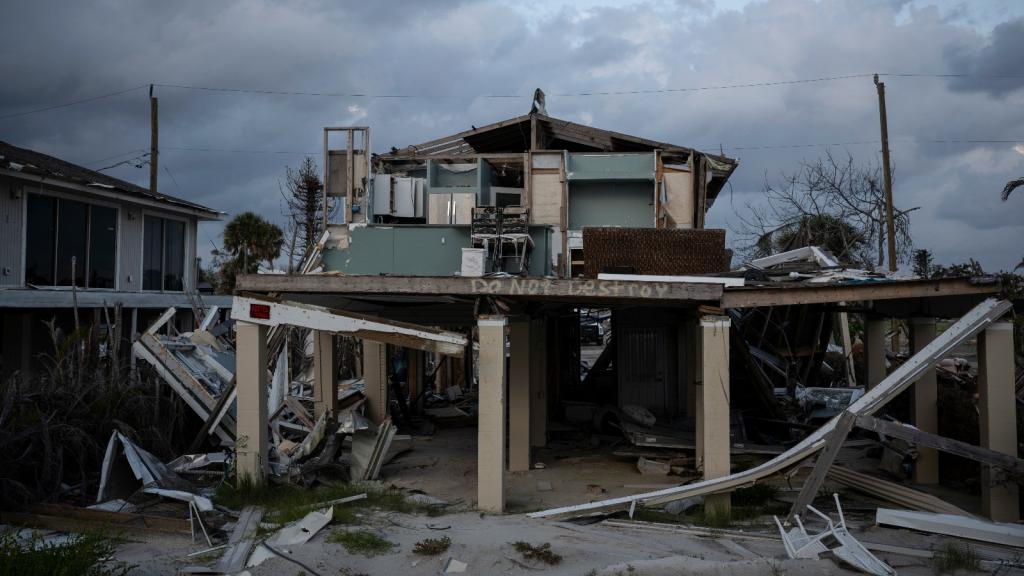This piece was co-authored by Ross Macfarlane.
Sens. Kerry (D-Mass) and Lieberman (I-Conn) finally released the American Power Act (APA) on Wednesday, May 11, after months of internal negotiations, and nearly a year after the House passed its comprehensive climate and energy bill, (the American Clean Energy and Security Act or ACES). Climate Solutions is still reviewing its nearly 1000 pages, and will be developing more detailed responses and priorities for our advocacy work. But we wanted to provide some high level reactions to our friends and supporters, and highlight some of the areas that we will be working on to strengthen and improve. We will be updating you on our thoughts, and would appreciate hearing yours.
At the end of this memo, we have included a list of sources we have used for our initial analysis which includes good resources for those who would like more details on the APA’s provisions. We want to single out the great work by Eric De Place at Sightline, who also helped us with our briefing call for key business and community leaders.
We will continue working for the strongest possible bill that limits global warming pollution, reduces our dependence on fossil fuels, and accelerates innovation and investment in clean and efficient energy. Our advocacy focuses on mobilizing our efforts and friends to fight for the best policy possible, incorporating the strongest provisions from a number of bills and policy proposals into the final product. We are particularly appreciative of the tremendous contributions of Sens. Cantwell and Collins in the CLEAR Act, and believe their focus on a simple, fair approach is having a positive influence as the Senate moves forward.
A note on the spirit of these comments, and the difficult situation we face as advocates for real climate solutions: Like every piece of major legislation in our somewhat dysfunctional political system, this one will bear the scars of fear-based special interest politics and insufficient ambition. We will keep fighting hard for what’s right and necessary, while understanding (at the risk of echoing Sec. Rumsfeld) that we have to go to the policy field with the Congress we’ve got. In every major climate bill that sees the light of day, we can expect (without condoning) big problems; but there are few problems bigger than continuing to fail to respond to the climate crisis. If we can find a way to move in a positive direction, we need to move. This may well include provisions of the APA as well as other bills, including the CLEAR Act. We’re focused on the destination more than the vehicles.
Our first cut on the American Power Act’s provisions:
-
Limiting global warming pollution
Our top priority for comprehensive climate and clean energy legislation is that it puts us firmly on the path to rapidly reducing fossil fuel dependence and building a strong clean energy economy. Science-based limits on global warming pollution are an essential foundation for that policy. We need a declining cap on emissions to send clear market signals that accelerate deployment and unlock innovation in clean and efficient energy solutions and to responsibly address the climate crisis.
The APA establishes reduction targets for covered sources of 17 percent below 2005 levels by 2020 and 83 percent by 2050. While these reductions are not steep enough, especially in the near-term, they do track with President Obama’s commitments in Copenhagen, ACES, and other proposals considered in Congress. The bill includes provisions which allow adjustment of the targets to the best available science. What is scientifically necessary may not yet be politically possible. We will continue to advocate for doing the whole job.
Because of the central importance of the emissions cap, we elaborate on it more than other features:
-
Structure of the cap
The bill takes a somewhat different approach than ACES (or other legislative proposals) — a “sectoral” approach rather than an economy-wide cap or trading system. It establishes caps that are phased in for four primary sectors — electricity generation, industrial sources, natural gas, and petroleum-based fuels. Together, these sectors account for approximately 85 percent of national emissions. Electrical utilities and petroleum based transportation fuels are covered starting in 2013, and the largest industrial emitters and natural gas companies are phased in beginning in 2016.
For transportation, the bill requires the petroleum companies to purchase allowances for the carbon emissions caused by their fuels at a price set by the market for other sources. The transportation sector is directly subject to the declining cap on carbon emissions, and oil companies will pay a price set by the market for these permits.
Eric De Place at Sightline has a good description of how this works.
-
Offsets
Our biggest concern with the emissions reduction provisions in the bill relates to the excessive amount of offsets that are available (2 billion tons annually). This is not new or unique to this bill — these provisions are largely unchanged from the ACES bill — but they do pose a significant threat to the integrity of the cap. The bill does establish oversight and accountability provisions that generally improve on the international standards and ACES. International offsets would be limited and discounted (1.25 tons of international offsets are required for every ton of emissions covered).
We strongly support projects that reliably store carbon or reduce emissions in uncapped sectors like agriculture. But they should not be used to excuse or “offset” a large proportion of the energy sector emissions within the cap. And two billion tons is just too much — enough to substantially undermine the incentives for technology innovation and deployment in the core energy sectors. We’ll be advocating a reduced scope for offsets and strong oversight to ensure they are legitimate and effective.
-
Market protections
The bill contains extensive provisions that limit the ability of traders to manipulate the market. It limits auction participation to the companies that are required to have permits. It also protects against synthetic derivatives. The bill incorporates some of the strong market protection provisions of Sen. Cantwell’s CLEAR Act as well as other efforts to better regulate markets. Again, Eric DePlace has a very good description of the market protection provisions and his opinion that they constitute an improvement over previous bills.
-
Price collars
As a method to reduce price volatility, the bill contains both a ceiling and floor on the price of carbon credits (which both escalate over the period of the reductions) and establishes a strategic reserve to reduce the likelihood that hitting the ceiling will “break the bank” by requiring EPA to issue additional permits above the levels allowed by the cap. We oppose a price ceiling, because it could allow emissions in excess of the cap. At minimum, we believe the ceiling should be higher and should escalate more rapidly to minimize the likelihood of exceeding the emission limits in the bill.
-
Allocation of allowances
As in ACES, many of the emission allowances are distributed without charge in the early years to electric and natural gas utilities, with provisions requiring the value to be distributed to ratepayers to reduce rate impacts and promote energy efficiency (note: the efficiency provisions are a bit unclear yet, and may not have the intended effect). 75 percent of the allowances would be distributed based on historical emissions and 25 percent based on the load served (ACES had a 50/50 split). The bill also follows ACES in allowing free distribution in the initial years to trade-sensitive industries. A substantial percentage of allowances are allocated for public purposes, such as support for state programs, deficit reduction, protection of low income consumers, and transit projects that reduce GHGS (this transit and other “smart growth” funding is new and welcome in the APA — the kind of legitimate, carbon-reducing public purpose that merits public investment much more than, say, provisions that shift financial risk from nuclear operators to taxpayers.)
Over time, the percentage of free allowances will decline and the amount auctioned will increase. After 2026, an increasing percentage of allowances will go to a trust fund which will rebate 75 percent directly to households and allocate 25 percent to deficit reduction.
Climate Solutions has always advocated an auction-based system and will continue to push for transparency, equity, and efficiency. The sky is a public resource, and any proceeds from the private use of that resource belong to the public. It is important to remember, however, that the allocation system does not directly affect the market signals or emission limits that are established by the declining cap.
-
Consumer protection
As noted above, the bill provides significant protections through utility rebates and (in the later years) direct refunds. It also provides direct refunds for low-income consumers who would be disproportionately affected by any cost increases and have done the least to cause global warming. We strongly support having good provisions that ensure that basic energy service is affordable to all.
-
The Clean Air Act and EPA authority
One of the areas of intense debate and concern is how new climate policy would affect EPA’s existing authorities to regulate climate pollution. The carbon reduction provisions of APA are a title of the Clean Air Act and would mark the first significant expansion of that Act since the 1990 Amendments (which established the Acid Rain Program). EPA would be the entity primarily responsible for implementation of the program.
However, APA would reduce CAA authority in one key area: major stationary sources. This is essentially the same approach taken in the 1990 Amendments — when Congress replaced individual source permitting approaches with a sectoral cap. The APA also establishes performance standards for coal-fired power plants built after 2020, and allows EPA to set performance standards for older power plants. It would preserve existing Clean Air Act authority over mobile-source emissions of global warming pollution and other types of air pollution.
We will be advocating for stronger preservation of EPA’s existing authority, especially for the largest and dirtiest sources. Some changes to existing authority are likely given the scope of new authorities in the legislation, but it’s imperative that we emerge overall with a much more effective national commitment to regulate climate pollution.
-
State authorities
The APA appropriately allows states to retain most of their authority to regulate global warming pollution and promote clean and efficient energy. The one major exception involves state cap-and-trade programs, like the one implemented in the Northeast States and proposed in the Western States under the Western Climate Initiative, which would be preempted. States that have implemented caps will get financial compensation for their lost revenues. In the House bill, these programs were suspended. While we prefer the House approach (or no preemption at all) we will likely be focusing our efforts on preserving the Bill’s broad retention of state authority and pushing for better funding and support for state programs. This is likely to be an area of continuing contention, and maintaining the ability for leading states to serve as pioneers and innovators is vital to our continuing progress.
-
Renewable energy and energy efficiency
APA’s energy efficiency and renewable energy provisions (standards and funding) are substantially weaker than ACES. In part, the reason is jurisdictional. In the House, a single committee developed the energy and climate portions of the bill. In the Senate, by contrast, different committees have jurisdiction. The Senate Energy committee reported a bill (the American Clean Energy Leadership Act or ACELA) last June, that contains provisions on these issues, but they are generally much weaker than the comparable provisions of ACES. For example, ACELA contains a national Renewable Power Standard that is weaker than what many experts predict will be achieved in a business as usual scenario, without any new policy.
We do note the addition of a Rural Energy Savings Program, authored by Sen. Merkley, that will provide substantial efficiency benefits in rural communities. Energy efficiency and renewable energy standards remain a critical piece of any successful emission reduction and clean energy job creation strategy; strengthening provisions will be a major focus for us.
The APA also contains far less financial support for state programs that promote energy efficiency and renewables than ACES. According to the American Council For An Energy-Efficient Economy (ACEEE), APA only provides one quarter of the state funding for efficiency programs as ACES and much less funding for gas utility programs to benefit consumers. ACEEE has estimated that the House bill would save the average American consumer $200 on their energy bills. One issue that we will have to look at more closely, though, is the potential trade-offs between these funding mechanisms for state programs and consumer protection. For a variety of reasons, the Senate Bill allocates less public funding overall, so the tradeoffs become somewhat more difficult. Since we strongly support both clean energy and consumer protection, we need to advocate for solutions that provide adequate funding without “robbing Peter to pay Paul.” One obvious place to look for this funding is the extensive giveaways to dirty energy, discussed below.
In addition to these examples, there are many important policies that will promote energy efficiency and renewables that should be amended into this bill or adopted separately. These include nationwide building codes, appliance and equipment efficiency standards, provisions to accelerate home and building efficiency (such as HOME STAR and BUILDING STAR), research and development support, renewal and expansion of incentive programs established under ARRA, and clean energy financing. Many of these provisions were contained in the House bill, and should be considered as part of a final package. A number of the leading associations representing renewable and energy efficiency businesses issued a joint statement last month highlighting a number of areas that they believe should be included in a comprehensive climate and energy bill.
-
Dirty energy giveaways
Presumably in an effort to find a path to 60 votes, the APA contains unwarranted and inefficient subsidies to dirty, risky, and expensive energy sources. Nuclear power gets more than $50 billion in federal loan guarantees, along with risk protection, cost recovery and streamlining/elimination of critical environmental and regulatory reviews. Taxpayers should not be asked to shoulder huge financial and other risks for a well-established technology like nuclear. And Senators who support fiscal discipline and oppose big government should be the last to insist on such provisions.
The APA contains a large program to demonstrate carbon capture and sequestration for coal plants. While we support research into CCS, the amounts of money involved perpetuate a huge investment in coal fired generation, well in advance of any solid evidence that a cost-effective solution for disposing of carbon emissions is at hand. We will advocate redirection of these subsidies to clean energy sources that entail less risk and greater public benefit.
-
Offshore drilling
The recent disaster in the Gulf graphically illustrates the costs of our addiction to fossil fuels. The APA provisions on this issue are clearly a work in progress, and are being amended to respond to the enormous public sentiment and concerns from coastal state senators. On the one hand, the bill provides a financial incentive (revenue sharing) for states that open their coastline to offshore drilling. On the other hand, the bill provides veto opportunities for states that would be affected by spills, and institutes some other protections.
Climate Solutions has joined with other groups in calling for a ban on new offshore drilling, at least until a full review of the Gulf disaster has been completed. We also support the efforts of the Senators in Washington, Oregon, and California to ban drilling off our states, as well as a stop to drilling in the sensitive and extremely hazardous environments of the Beaufort and Chukchi Seas off arctic Alaska. Expanded fossil fuel exploration has no place in a climate bill, since it demonstrably promotes increased emissions. And in the wake of the Gulf oil disaster, these provisions may well cost the bill more votes than it attracts.
Conclusion and recommendations for strengthening
The American Power Act is much less than we need and much more than we currently have for a national climate policy. It would, for the first time, establish a flawed but significant national commitment to climate solutions. Given the ticking clocks of climate change, the threats to our national security, and the race to compete in the global clean energy economy, we must do everything possible to get the best possible bill enacted now. And there are few signs that our dysfunctional political system is going to make meaningful change easier in the next session or near future.
We urge the Senate to pass the strongest possible climate and clean energy bill this year. Initial priorities for strengthening the APA include:
- Stronger and more certain emission limits, including stronger near-term targets, provisions to limit the quantity and quality of offsets, and a price collar that preserves the integrity of the cap.
- Stronger energy efficiency and renewable energy standards and funding, with a significant change in the balance of investment from higher cost, dirtier technologies to cleaner ones with greater public benefit and less risk.
- Preserving and enhancing key regulatory authorities of EPA and the states.
So the APA is clearly a mixed bag. But we’re going to keep fighting — creating the political space for what we need, and pushing the Senate to do more than it appears to believe it can. We hope you’ll join us.


